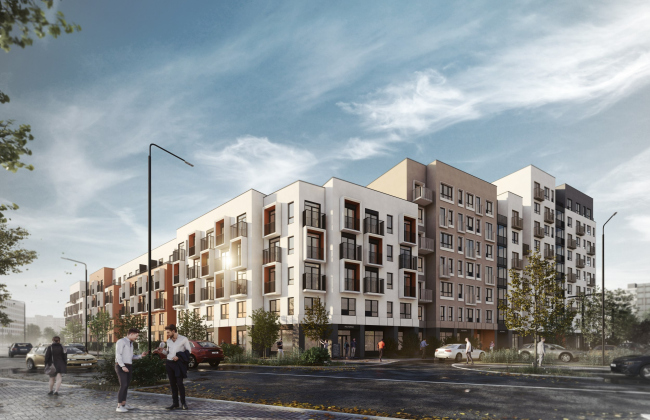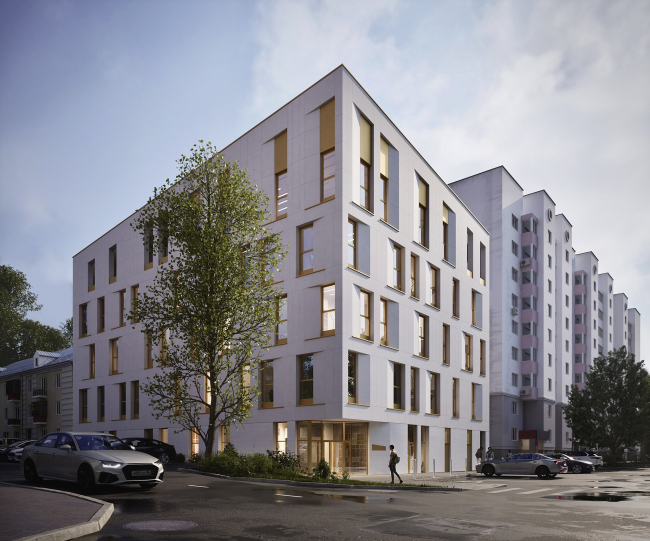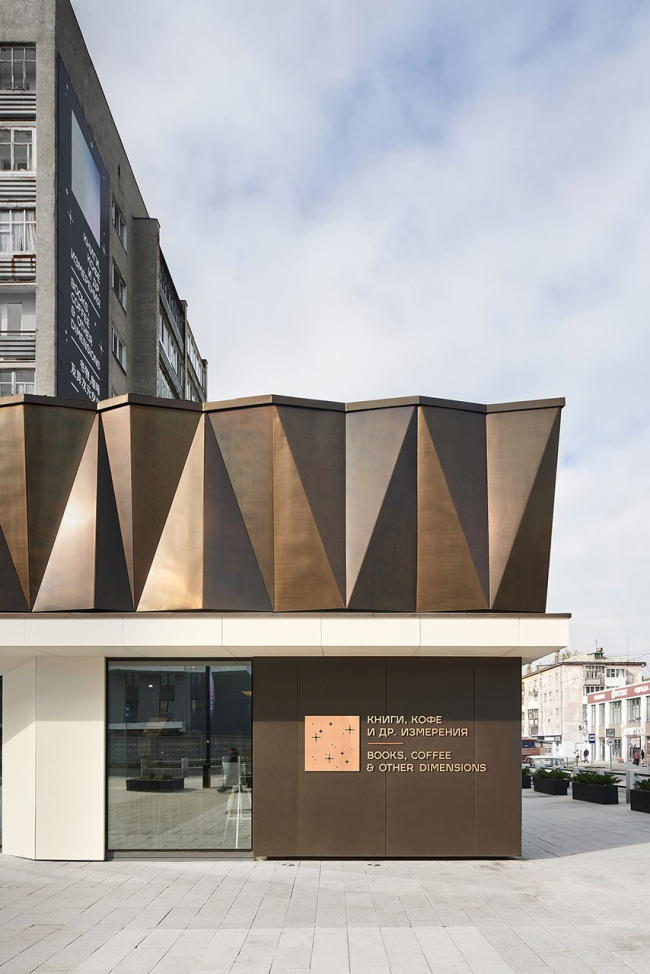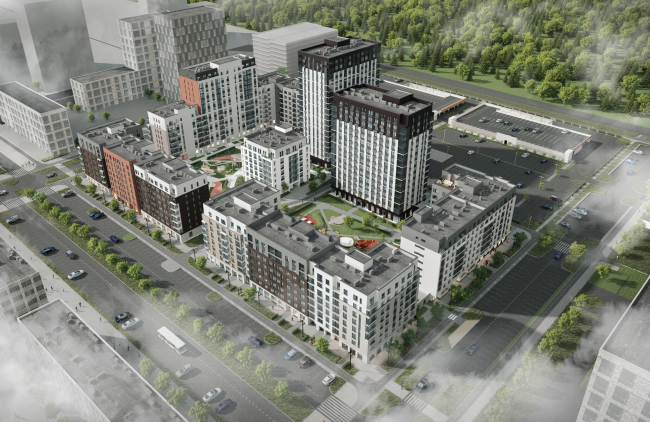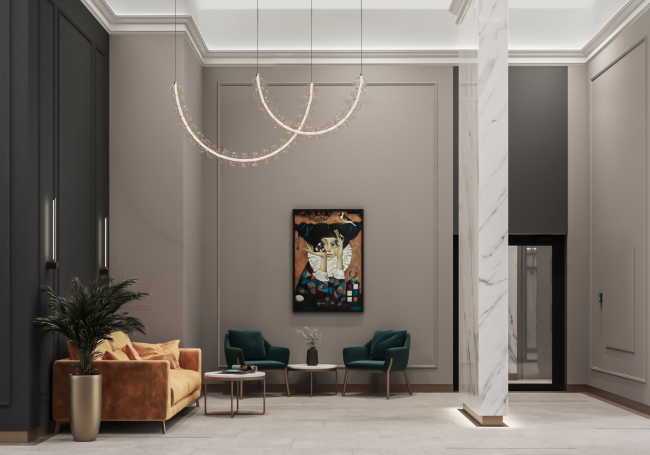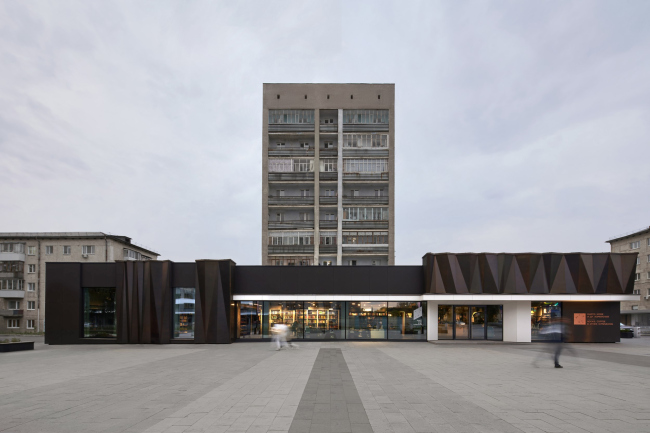|
Published on Archi.ru (https://archi.ru) |
|
| 05.06.2024 | |
|
Andrey Chuikov: “Optimum balance is achieved through economics” |
|
|
Alyona Kuznetsova |
|
| Architect: | |
| Studio: | |
|
The Yekaterinburg-based architectural company CNTR is in its mature stage: crystallization of principles, systematization, and standardization helped it make a qualitative leap, enhance competencies, and secure large contracts without sacrificing the aesthetic component. The head of the company, Andrey Chuikov, told us about building a business model and the bonuses that additional education in financial management provides for an architect. Archi.ru: “Bread and Salt” gastronomic centerCopyright: © Image courtesy by CNTR ArchitectsBefore 2015, CNTR did not perform the functions of a general contractor and did not handle all phases of documentation development. After Timur Abdullaev became the chief architect of Yekaterinburg, the demand for the quality of façade solutions significantly increased. This allowed us to unlock the accumulated potential of the company. Within a year, we were able to release several expertise projects and move into the multi-apartment housing sector in the capacity of the general contractor. Residential complex in Istoksky district, YekaterinburgCopyright: © Image courtesy by CNTR ArchitectsSince 2017, we have been moving away from a “manual” approach toward systematization, which was partly due to my education: at that time, I was getting additional education in business and financial management. The company developed a vertical management chain, functional division, elements of internal standardization, and budget management. The transformation was fully completed by 2020, and we lost part of our team along the way: not everyone was ready to transition from a laid-back “bohemian” atmosphere to a classic management system. Currently, we have 45 employees working for our company. Can we say that your company has its own specialization? Our approach is based on versatility. Initially, we worked a lot with private houses, which gave us flexible thinking and experience in selecting unique solutions: a single-story private residence often exceeds a multi-family complex in terms of complexity. Then we moved into housing and master planning of areas ranging from several dozen to hundreds of hectares. One such large-scale project is the “Mahachon Valley” in Kazan. But at the same time, we always work on other projects – headquarters and medical facilities, HoReCa, reconstruction, IT parks. Development concept for the “Mahachon Valley” area in KazanCopyright: © Image courtesy by CNTR ArchitectsDental clinic in YekaterinburgCopyright: © Image courtesy by CNTR ArchitectsIn the Ural and Siberian Federal Districts, competition has reached a very high level – there’s OSA, Brusnika with its guest star foreign architects, and Moscow and St. Petersburg designers are coming to design in your region. What can you offer in return? The identity of our approach. We have a set of principles, the main ones being equality within the company and in working with the client, as well as balancing different components: analytical data, the needs of the client and the end user, economics, and our architectural vision. The optimum balance is achieved through economics. Understanding the financial model that the developer uses allows us to speak their language and justify the need for certain environmental improvements through consumer properties, sales speed, and added value. Additionally, we are meticulous: we delve into all the details, thinking through aspects that the client might not consider or simply overlook at the current stage of design, but which shape the environment and the architectural image of the project. All my “thoroughness” has turned into an internal standard of the final product, which is now evolving with the entire company team. “Grand Quarter” residential complex in TyumenCopyright: © Image courtesy by CNTR ArchitectsDoes such “effective management” leave any room for the creative aspect of the profession? The way I see it, pure creativity may only exist in painting, but even there, there’s a side to it. Creativity becomes more interesting when we work with material physics, economics, marketing, sociology, and ecology. Constraints force us to expand our toolkit. From an aesthetic standpoint, it helps to understand what is good and bad. I act as the aesthetic “filter” in the team: I participate in discussions and help the team in product development, understanding the client's thinking and goals. When the client is open to us, it allows us to understand their true objectives, and through them, we can find a crucial element for visual art. Cultural Center "Books, Coffee and Other Dimensions"Copyright: © Image courtesy by CNTR ArchitectsCNTR is listed among the top ten young architectural companies in Russia according to Afisha Daily. How do you feel about this status? (Can a company with such tremendous experience still considered young?) Being included in this list is flattering in terms of recognizing our fresh perspective and trendiness; at the same time, these two qualities have been honed through trial and error. I believe we are in a stage of maturity: we have formulated principles, achieved systematization, and replaced spontaneous creativity with an understanding of real tasks – the infantile worldview of “I am an architect, I see it this way” is no longer applicable to us. Can you tell us about the use of GIS data analysis in your practice? In our work, GIS data is Big Data that we most often use when designing master plans and commercial projects. These data help us make decisions regarding functions, content, accessibility, the purchasing power of the target audience, and dozens of other parameters. We use parametric design tools to analyze GIS data, generate information related to pedestrian flows, aeration of the area, and light exposure calculations. “Grand Quarter” residential complex in TyumenCopyright: © Image courtesy by CNTR ArchitectsDo you have projects involving neural networks? What is your general attitude towards this tool? We actively use neural networks at intermediate stages when we need to illustrate a particular solution in a way that is convenient for the client. This significantly speeds up the work. Instead of spending two to three hours building a model, we create an image in 10 minutes, and then show it to the client – is this okay? Okay! Then we move on to the next stage of more detailed development. Another example is the design code for the interiors of public areas in residential complexes in the “Akademichesky” district for the Kortros company. We proposed placing paintings in common areas and “commissioned” them from a neural network, thereby eliminating the artist-client chain, reducing additional communications, time, and production costs. At the same time, we achieved the preservation of the concept’s integrity. MOP collection for the Akademichesky district residential complex in YekaterinburgCopyright: © Image courtesy by CNTR ArchitectsWhich CNTR projects do you consider the most important milestones for you? Among the completed projects, the most important remains the bookstore in Verkhnyaya Pyshma and the full-scale residential district “Grand Quarter” in Tyumen. They embody our main principles. There are several important projects that did not come to fruition due to the crises of 2014-2017 and the subsequent ones. Cultural Center "Books, Coffee and Other Dimensions"Copyright: © Image courtesy by CNTR Architects“Grand Quarter” residential complex in TyumenCopyright: © Image courtesy by CNTR ArchitectsCurrently, we have a large volume of housing under construction in Yekaterinburg and Tyumen. We work with various regions of Russia: Moscow, Kazan, Omsk, Novosibirsk, Perm, Ufa, Chelyabinsk, KhMAO, and YaNAO. We also have several international projects: we designed residential development for Greece and developed a water park concept for the USA. |
|

